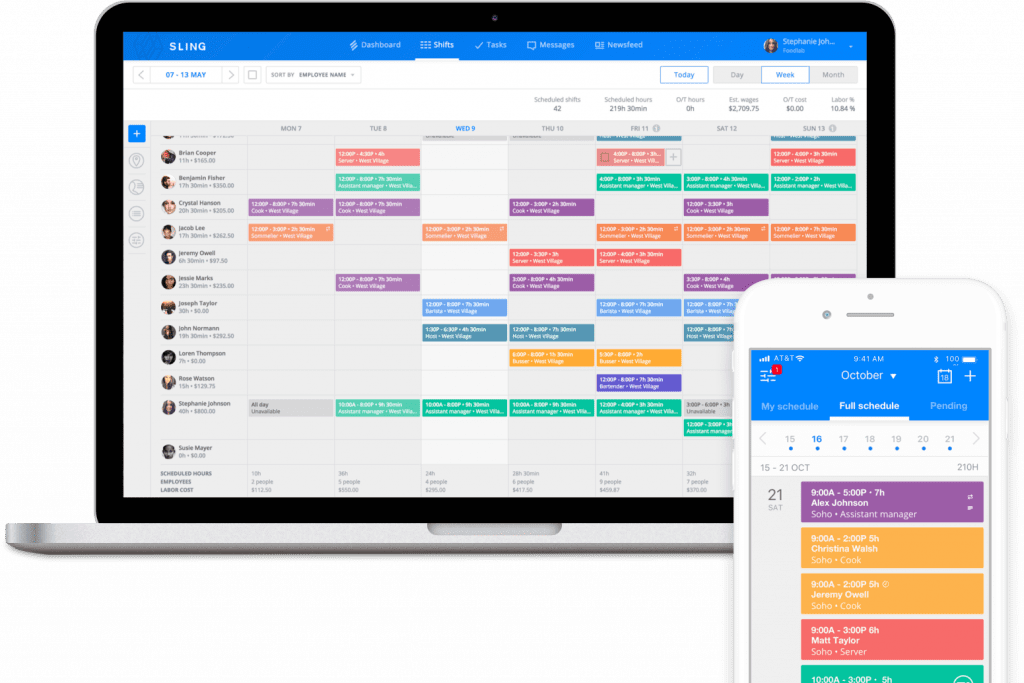13 Employee Satisfaction Survey Questions To Ask Your Team
Want to help your employees feel happy and content with their jobs and work envi...

If your business is looking for ways to cut costs and gain real-time control of its mobile workforce, fleet management might be the solution.
It doesn’t matter if your business owns one vehicle or 100, a robust administration program will keep those assets in good condition and performing longer than they would otherwise.
In this article, we discuss everything business owners need to know about fleet management in order to implement such a program into their existing workflow.

Fleet management is the system and software your business uses to coordinate, administer, and direct the vehicles in its employ and those who operate them.
This type of program encompasses everything from acquisition and use to performance, maintenance, and disposal.
And while it most often applies to cars, pickup trucks, and semis, fleet management also takes into account such tools as:
Any rolling stock that your company uses to conduct business and get the job done typically comes under the purview of fleet management.
And, as we mentioned earlier, the successful administration of these assets is about more than just choosing your favorite color or the number of features that come with the vehicle.

The fleet management administrator is largely responsible for purchasing the vehicles your employees will use in their day-to-day responsibilities.
As such, that person needs to work closely with both front-line workers and upper management in order to acquire the vehicle(s) that work best for your business.
Another major component of fleet management is safety.
Whether it’s implementing training programs or rolling out tools such as dash cams in business vehicles, a fleet manager sets the tone for the safety and well-being of both the vehicles and the drivers.
In many cases, fleet management personnel are also responsible for hiring drivers and operators.
Program administrators know what skills and knowledge are necessary to successfully and safely handle the vehicles in the business fleet, so they are the ideal option to interview and hire the best employees.
Depending on the number of vehicles your business employs, the tracking component of fleet management may be a separate position unto itself.
The more effectively a business tracks the vehicles in its fleet the better able it will be to coordinate efficient activity and increase productivity without waste (both in resources and time).
For any fleet management program to be successful, compliance needs to be at the top of its priority list.
Compliance applies to all aspects of the vehicle administration program and encompasses such necessities as:
Compliance laws and regulations may differ from state to state and city to city, so be sure to research everything that’s necessary for keeping business vehicles legal.
Without employees to operate the business vehicles, fleet management would be all but useless.
While hiring is a big part of a successful vehicle administration program, employee retention is equally important.
Your business has gone through the effort and expense of hiring and training drivers, now it’s time to focus on keeping those employees working productively.

Travel time is a very real concern for all fleet administrators. It’s a necessary part of getting the job done, but keeping it to a minimum will help save both money and wear-and-tear on the vehicles themselves.
With GPS tracking and instant communication, logistics managers now have real-time control of where their vehicles are and where they will go in the future.
For example, a service technician may finish a job early and be able to reroute to a nearby call before traveling across town to their next scheduled appointment.
Transparency is a big issue for businesses these days. Fleet management is no different.
Knowing where vehicles are at all times goes a long way toward providing the transparency your customers and your business demand.
Some businesses even provide simplified tracking apps so that their customers can verify where a vehicle is and when it will arrive.
This provides an unprecedented level of transparency that helps increase your productivity and the productivity of your customers.
Effective fleet management also plays a big part in maintaining driver satisfaction.
With driver shortages becoming a very real issue these days, keeping your vehicle operators happy and engaged is more important than ever.
The more your fleet employees enjoy their work, the more likely they’ll be to perform at a high level and do a good job for your customers.
For businesses that operate a fleet of vehicles, fuel to keep those assets running can be a major expense.
Whether it’s gasoline, diesel, electric, or something else, effective management programs can help reduce the cost and consumption of these resources.
Keeping the vehicles maintained and in good operating order gives them more miles per gallon, and the real-time control of modern fleet management helps provide the most direct and efficient route to the next stop.
Monitoring these aspects of the business fleet gives administrators the data they need to implement cost-saving solutions and help increase the productivity of the business vehicles.
Directing vehicles where they need to be and where they will do the most benefit, not to mention keeping them all on time, means that your customers won’t have to wait for deliveries and technicians to arrive.
With notifications and real-time tracking, they can plan their activities better and avoid delays to their workday.
As a result, your business gains a reputation for reliability and dependableness. This improves customer satisfaction and customer loyalty and helps your business remain productive and successful.

One of the most integral parts of field service management is scheduling. In fact, successful fleet management starts with effective scheduling.
At the most basic level, it doesn’t matter how well your business manages the other components of its fleet. Without a strong scheduling process, the entire program just falls apart.
If you want to establish a fleet management program in your business, start by integrating powerful scheduling software into your workflow. Such software will lay the foundation for all your future vehicle management efforts.
What tool is right for the job? The Sling app.
We developed Sling to streamline the scheduling process and make even the most complicated fleet programs run like clockwork.
But Sling is about more than just plugging names into time slots. It’s about making every aspect of the job — from scheduling and logistics to communication and tracking — easier and faster.
Sling’s cloud-based program provides a central location where your team can indicate when they’re available to work. Sling then displays reminders about double-bookings, time-off requests, and unavailability in real-time so you spend less time editing who works when.
Sling also brings together two additional toolsets to make your field service management easier: time tracking and labor cost control.
During the workweek, Sling’s unique time-tracking features allow you to turn any phone, tablet, or computer into a fully functional time clock that your employees can use to clock in and out.
At the end of the workweek, just a few clicks or taps is all it takes to export your employees’ timesheets for payroll processing.
Simply review the timesheets, edit and approve, and then send them to your choice of third-party program for seamless payroll calculation and distribution.
You can then go back and use Sling’s labor cost tools to measure, manage, and optimize your spending as you schedule.
Creating and maintaining a fleet management program for your business has never been easier with the Sling suite of tools.
Try the app for free today to see how Sling can help you simplify your workforce management.
For more free resources to help you manage your business better, organize and schedule your team, and track and calculate labor costs, visit GetSling.com today.
See Here For Last Updated Dates: Link
This content is for informational purposes and is not intended as legal, tax, HR, or any other professional advice. Please contact an attorney or other professional for specific advice.
Schedule faster, communicate better, get things done.